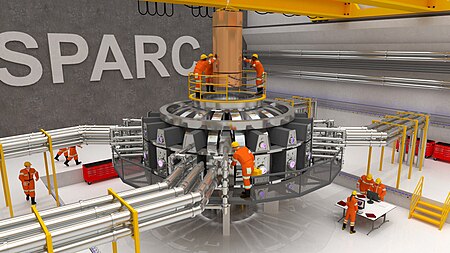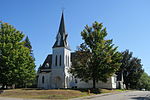SPARC (tokamak)

SPARC is a tokamak under development by Commonwealth Fusion Systems (CFS) in collaboration with the Massachusetts Institute of Technology (MIT) Plasma Science and Fusion Center (PSFC). Funding has come from Eni, Breakthrough Energy Ventures, Khosla Ventures, Temasek, Equinor, Devonshire Investors, and others. SPARC plans to verify the technology and physics required to build a power plant based on the ARC fusion power plant concept. SPARC is designed to achieve this with margin in excess of breakeven and may be capable of achieving up to 140 MW of fusion power for 10 second bursts despite its relatively compact size. The project is on schedule for operation in 2025 after completing a magnet test in 2021.
Excerpt from the Wikipedia article SPARC (tokamak) (License: CC BY-SA 3.0, Authors, Images).SPARC (tokamak)
Hospital Road,
Geographical coordinates (GPS) Address Website Nearby Places Show on map
Geographical coordinates (GPS)
| Latitude | Longitude |
|---|---|
| N 42.5437 ° | E -71.6271 ° |
Address
Commonwealth Fusion Systems
Hospital Road 117
01434
Massachusetts, United States
Open on Google Maps







